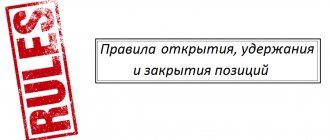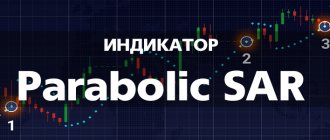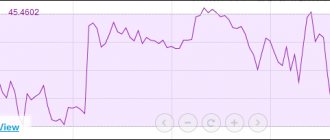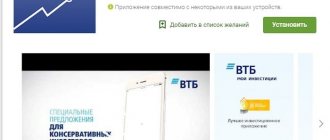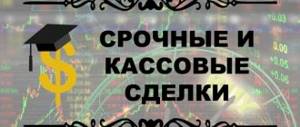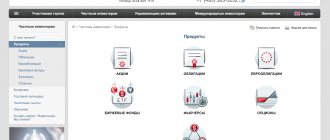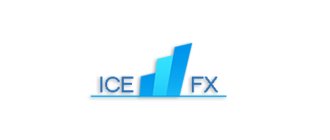- How to use open position data
- What is the difference between data on open orders and positions?
- Oanda
- ForexFactory
- DailyFX SSI from FXCM
- Saxo Bank
- Currency options positions
- Dukascopy
- Example of using the SWFX Expectations Index
- Etoro
- Alpari
- Myfxbook
- How to use currency positions correctly
- Look for market distortions
I have already told you all about the fact that there is no volume data on the foreign exchange market, which we talked about in other lessons. Such is the global FX market - cunning and decentralized, without a single clearing center. Fortunately, this is where exchange tools come to our aid, such as the already discussed COT data or CME levels. However, in the retail Forex segment, many brokers provide information on their clients' open currency positions.
Does this indicate the general state of the entire foreign exchange market? Relatively. It’s like in a sociological survey - to find out the mood of the whole country, you don’t need to interview everyone, you can make a competent sociological sample.
At the same time, the data remains what it is - information about transactions of clients of a single retail broker, and not the entire market. However, if we take several brokers at once, we will get a slightly more representative picture. But it will also be only a tiny part of the whole.
Description of the indicator
The open positions indicator is a tool that helps traders make profitable deals with futures or options and “weed out” unattractive offers. The tool is not suitable for users who deal only in securities exchanges, as its value will be useless for such market participants.
The open positions indicator is one of the first tools used for technical analysis. It is not based on any formulas. This distinguishes the indicator from other similar tools. It only shows the number of open positions for a specific asset, that is, the number of futures agreements for the acquisition and sale of an asset. A futures contract is concluded between a seller and a buyer, where one sells an asset and the other acquires it. Such transactions are carried out:
- through a broker;
- large traders.
The indicator under consideration shows only the number of contracts that have not yet been concluded. In this case, the type of agreement is not taken into account. For this reason, contracts can be for both the acquisition and sale of assets. Each of them influences the value of the instrument. In addition, the indicator will not change the indicators if one agreement is closed while another contract is opened at the same time.
This instrument is located under the price movement chart of the underlying asset. It shows the change in a curve that shows the number of traders present in the market. Depending on whether contracts are opened or closed, the chart moves up or tends down.
Conclusion
Open interest in Quik is an important indicator that shows the interest of participants in changing the price situation in the market. By correctly analyzing the data, a trader will be able to understand whether positions on an asset are being gained, closed, or consolidated. Knowing this information, the trader forms an action strategy and predicts the development of events.
A change in the value of OI up to 10% is not of interest for analysis, but if the change is more than 25%, it is often a signal of important changes in the market. The interpretation of growth, fall or unchanged indicator depends on how prices change at this moment.
The higher the OI, the more active the market and the lower the risk of losses. Traders working on short time intervals use markets with the highest OI values.
Rules for calculating the indicator
The open type indicator is calculated by adding up all open contracts on open transactions and subtracting agreements for which transactions have been fully implemented. It does not matter what kind of transaction we are talking about - the sale or acquisition of an asset.
Let's look at a situation where there are three traders working on the market. They trade futures. Their contracts have the following impact on the open interest indicator:
- The first trader opens a long position by purchasing one contract. As a result, the indicator increases by one.
- The second trader opens a long position by purchasing seven contracts. As a result, the indicator increases by eight.
- The first trader exercises the contract and exits the market. This leads to a decrease in the indicator value to seven.
- The third trader opens a short position, completing seven trades. As a result, the indicator increases to fourteen.
The process of calculating an instrument becomes more complicated if each market participant acquires and sells an asset from another trader, who also performs acquisition and sale transactions. All market participants can only open contracts. This increases the indicator value. If a transaction is opened and closed simultaneously by different traders, the instrument indicator will not change. When all market participants close trades and no other contracts are opened, the indicator decreases.
Opening a long position
Buyers who make trades in the hope of further growth are said to be opening a long position. Or they go long (from the English long - long). Such traders are called bulls or bulls.
The principle of the bullish game is extremely simple: buy low and sell high. That is, buy for 100 rubles, wait for the price to rise, say up to 130 rubles, and sell. Net profit will be 30%.
Let's look at the example of Moscow Exchange shares. Making a purchase of shares in September 2015 at a price of 75 rubles / piece. the trader predicts further growth in quotes, i.e. takes a long position. The forecast turned out to be successful and exactly a year later the shares were sold at a price of 130 rubles. The profit amounted to 55 rubles per share or 73% of net profit.
Long position on Moscow Exchange shares
Rules of application
Even novice traders have no problems using the indicator:
- if the indicator increases, it means that more open contracts appear on the market and the trend is confirmed, but it is impossible to understand whether it will be upward or downward;
- if the indicator decreases, it means that there are fewer market participants, which signals that the trend will soon change;
- if the value begins to increase sharply, this indicates that the trend is gaining strength;
- if interest in the indicator has sharply decreased, this indicates that the trend has lost strength and a new asset will soon open.
The open positions indicator is recommended to be used for long-term forecasting. It should not be used for short-term transactions.
Professionals advise making a transaction with assets when the indicator level is high, as this indicates that there are many sellers and buyers in the market. In this case, the application can be executed at the best price.
As soon as the indicator value begins to decrease, it is recommended to close the transaction immediately. If you don't do this, you could lose a significant amount of money.
Details about what an open positions indicator is in the video.
How to use currency positions correctly
Of course, we have all heard that more than 90% of people lose money in the foreign exchange market. But does this mean that in any given period of time, more than 90% of traders forecast market movements incorrectly? This would imply that we, as the smartest ones, can simply go against the opinion of the crowd and always remain in the black. Newbies often think this way)
And... no. This opinion is fundamentally wrong. According to statistics from major Forex brokers, more than half of traders give... actually correct forecasts! Predicting a trend is not so difficult; conventional technical analysis is quite enough for this.
So why are they at a loss then? According to FXCM statistics, on average 61% of traders close EUR/USD trades with a profit. Here's just the most important nuance - their average profit is 48 points, and the average loss is 83 points. This is a difference of almost 70% and this is what is critical . Because in Forex, unlike binary ones, each point costs money.
Forex traders lose more money on unprofitable trades than they make on profitable ones.
The reasons are poor risk and money management (or their complete absence). The average retail trader is extremely jumpy and poorly disciplined; he does not know how to work with risks and money. Hence the typical paradox - the majority, in fact, are good at predicting price movements (it’s easy to draw a trend line), but do not know how to make money from it. Therefore, he gets caught on pullbacks, is greedy, does not know where to enter, when to exit correctly, where to place stops/takes, is afraid to follow the trend, etc.
Therefore, I would not recommend using these tools - data on open positions - as a way to enter “against” the mood of the crowd. It’s the other way around: the crowd, for the most part, is right regarding the movement of the currency pair.
Therefore, this data can be used in reverse - as an indicator of long-term trends. You will notice for yourself if you observe over long periods of time that position indicators well reflect the overall market trend. It is in this capacity that it is reasonable to use them.
Also remember that this is retail forex data. The average retail trader tends to jump around like a flea and rarely holds a position open for more than 2 days, which is something to consider when analyzing his trades. Take into account the fact that the entire retail forex market - all the retail brokers in the world - is less than 15% of the total volume of the foreign exchange market, a tiny niche. Therefore, use such data as another market indicator, which will allow you to get another hint regarding market movement.
Margin trading
For many novice investors, the issue associated with opening short positions remains unclear. Namely, how you can sell what you don’t have. Here the trader implements a margin trading scheme.
Margin trading involves transactions in which assets are sold against the security of an agreed amount (margin)
With this scheme, goods are sold for the purpose of purchasing and returning a similar one after some time. This type of short selling is called a short position.
The scheme allows you to make a profit in a situation where prices are falling. If the securities lose value, the trader buys them back at a reduced price and returns them to the broker, keeping the profit for himself.
Trading in the securities market is a risky process in general, and opening short positions is especially risky. The value of securities, contrary to hopes and forecasts, may begin to rise. This means that the trader will have to invest his own funds to buy back the securities, which must be returned to the broker, who also risks in such a situation.
Installation
1) Download the advisor by clicking on the button below.
2) The downloaded file must be moved to the MQL4/Experts in the data directory of your terminal.
To open the data directory, click in the upper left corner File -> Open Data Directory .
3) Restart the terminal (or refresh the list in the navigator by right-clicking).
4) Move the loaded advisor from the navigator window to the chart.
Opening short positions using real-life examples
Often beginners cannot understand the meaning of short positions. How can you sell something you don't have? How can you sell, say, Sberbank shares on the stock exchange if you don’t own them?
If it’s clear with long positions, then with short ones at first glance everything looks kind of strange. Analogies with long positions in our lives immediately come to mind. I bought tomatoes wholesale for 30 rubles per kilogram, and then sold them retail for 50 rubles. I took dollars for 50 rubles, a year later I sold them for 65. These are all long positions.
And now short or short selling. If you dig deeper, there is nothing unusual. Such transactions also happen all the time in our lives, but they don’t have a name. Here are some examples.
1 example. Vasya really wanted to drink mineral water. But he cannot leave the office and go to the store. You take 100 rubles from him and promise to bring him some water within an hour. You have just completed a short sale. After all, you don’t have water, but the money has already been received. You go to the store - buy mineral water for 70 rubles and give it to Vasya. Those. you closed your short position and made money from it.
2 example. Manufacturing of furniture to order. The intermediary seller who accepts the order and money from the buyer makes a short sale. He does not have this in stock, but he is obliged to provide the buyer with the goods after a certain time in full. The intermediary orders furniture from a furniture factory at a lower price, delivers it to the buyer, and pockets the difference between purchase and sale.
Open interest in the derivatives market
Many legal entities are interested in derivatives trading, but it is especially common among private traders. In their work they are guided by open interest (OI). This is the name of the number of open positions measured in contracts.
For example, a deal was concluded between a seller and a buyer for 1 contract. In this case, it is considered that the OI has increased by 2 contracts. In this case, one is concluded by the buyer, and the other by the seller.
In the Russian Federation, the derivatives market was opened in 2001. At the same time, the project was being developed on the MICEX, but the latter did not become widespread, so after some time it was closed.
After the merger of the MICEX and the RTS took place, the derivatives market became part of the Moscow Exchange (MOEX).
Interest in it increased in October 2012, when the exchange began publishing materials first weekly and then daily. From them, traders could learn about the number of positions open on the market.
Open interest indicates the liquidity of financial instruments. The more positions are open, the higher it is.
Most private traders monitor the dynamics of OI. Traders believe that based on this information they can understand where the market is heading. They try to figure out what moves the big players are making and then try to follow them with similar deals.
Tool Operations
If you look at the market for financial instruments, it becomes clear that they are represented by derivatives or securities.
Derivative instruments other than repos provide that the following obligations will be satisfied:
- one of the parties transfers the subject of the contract to the other;
- buy or sell it if the other party demands it;
- transfer it into ownership or accept the property by making payment for it.
The underlying assets in this case can be not only goods, currencies and securities, but also interest rates. This includes the level of inflation, statistical information, indicators of the state of the environment, and some other circumstances.
When talking about derivatives, you need to keep in mind that they can have more than one underlying asset.
Open positions on derivatives
The exchange plays an intermediary role in derivatives transactions. Every day information appears about positions open on the market, everyone can familiarize themselves with it. Bidders have access to materials and can download contract data. For convenience, the information is presented in the table.
It reflects the number of individuals and legal entities who are participants in transactions. The number of contracts is indicated. Information is provided on whether the number of contracts has changed compared to the previous day. The table shows how many people have open positions. It is easy to determine whether they are long or short.
Data is available not only for individuals, but also for legal entities. The reports show the total volume of open positions.
Derivative financial instruments - classification
The classification of derivative instruments is as follows:
- According to the acquired right, one can distinguish Call and Put options;
- According to the type of financial assets, a distinction is made between an option on a share and an option on a bond;
- According to the terms of execution, the option is divided into American and European.
Most often, a full lot is purchased, it includes 100 pieces.
Bulls and bears
One cannot help but mention the jargon that is used to explain the concepts of short and long positions.
Thus, long positions are called “bullish” by participants in exchange trading. There is an opinion that this term was born due to the fact that a real live bull can hook something up onto its horns and wear it like that for some time. The bull is also characterized as stubborn, stable, capable of standing his ground for a long time.
The opposite phenomenon – short positions – is usually called “bearish”. This term is also explained by the characteristics of animal behavior. Firstly, a downward trend is symbolically associated with the way a bear bends something with its paws and forces it to bend.
Another possible origin of the term may be related to the expression “To share the skin of an unkilled bear.” Thus, an investor, when selling an asset that he borrowed from a broker, risks not guessing the trend and not getting the profit he expected.
